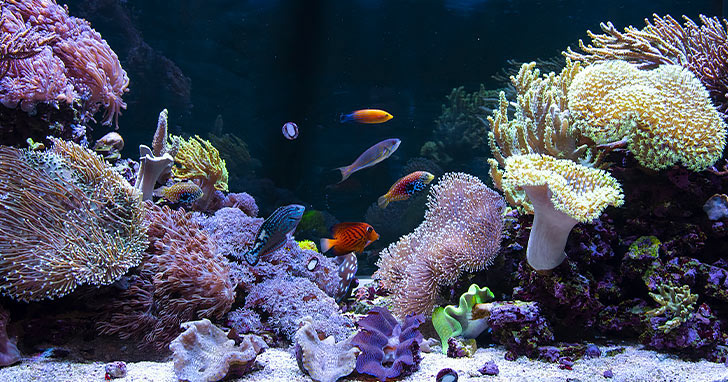
Aquarium water chillers, as their name implies, are aquarium water temperature control units designed to keep aquariums from "over heating" amid hot lights and warmer weather. Nearly every piece of aquarium equipment can radiate heat into your aquarium. Combine this fact with hot summer weather and you'll be hard pressed to keep your aquarium water temperature from rising beyond the "safe zone."
Overly warm aquarium water can directly affect temperature-sensitive inhabitants but can also jeopardize the overall health of the aquarium by limiting dissolved oxygen content. Learn how aquarium chillers work and why you may need one to help decrease water temperature.
How Aquarium Water Chillers Work
If you're considering a reef aquarium or have an aquarium with rising water temperature, it's time to learn more about water chillers. These modern cousins to the dorm room mini fridge help you keep your cool even as things heat up. Contrary to common belief, aquarium chillers lower water temperature by removing heat rather than "chilling" or creating cold.
Similar in function to refrigerators or air conditioners, aquarium water chillers rely on a refrigerant that is compressed and chilled within its internal plumbing. As warm aquarium water flows past the chilled portion of the heat exchange system, heat is drawn out and transported to the radiator grill. There, heat is released into the ambient environment with the aid of a ventilation fan.
Who Needs to Chill?
Aquarium water chillers help maintain stable aquarium water temperatures even as other environmental factors want to warm up your water. Designed for convenient water temperature control, all you need to do is set your optimum temperature on the water chiller unit using the built-in thermostat control.
If your aquarium setup is affected by the following factors, you should consider getting a water chiller:
- High output lighting or Metal Halide lighting
- Poor air or water circulation
- Direct sunlight
- Warm weather/climate
- History of fish/coral problems
Which Chiller is Right for Me?
Aquarium water chillers are available in two basic styles: In-line or drop-in. The main difference between the two is the manner in which aquarium water comes into contact with the heat exchange system. In-line chillers use an internal heat exchange system. As such, they rely on water pumps to actively transport warm aquarium water to the heat exchange system and carry the cooled water back into the main system. These chillers require plumbing and installation should be incorporated into the overall aquarium plan prior to execution.
In contrast, drop-in chillers have an external heat exchange system or probe (cooling element). The probe is placed into the sump area of wet/dry filters and comes in direct contact with warm aquarium water. While the chiller does not require any additional plumbing, a properly sized return pump is essential to ensure efficient transport and circulation of cooled water back into the main aquarium system.
Tips for Selecting the Right Water Chiller
- When selecting an aquarium water chiller, in addition to aquarium size, take into account the number of aquarium equipment you employ such as water pumps and lighting fixture. These additional devices generate excess heat that can reduce chiller efficiency.
- If your aquarium falls on the upper end of chiller recommendations, choose the next larger chiller. For example, if you have a 50-gallon aquarium and the chiller is rated for aquariums up to 50 gallons, then select the next size up to ensure adequate cooling.
Tips for Optimizing Water Chiller Performance
- Good ventilation is essential for optimum chiller performance. Maintain a "space buffer" that maintains at least 1 to 2 feet of space around the entire unit.
- Use cooling fans to actively disperse chiller exhaust and minimize heat and moisture buildup.
- For in-line chillers, consider reducing the flow rate of your return pump slightly to allow longer contact time between warm water and the cooling element.
|